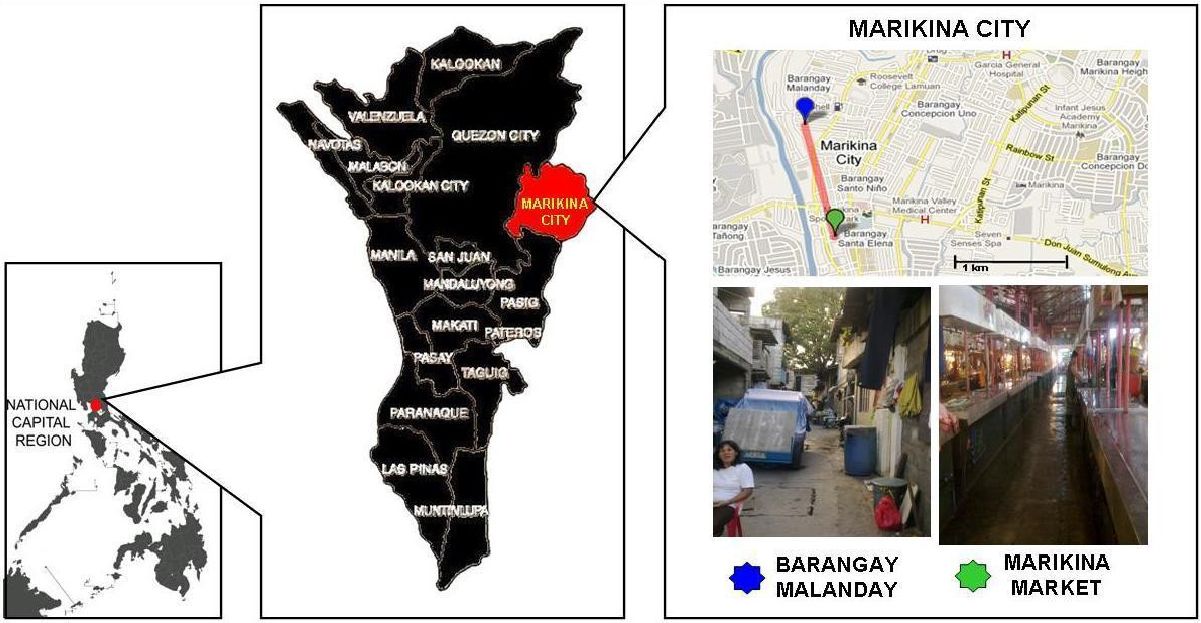VOLUME 5 NUMBER 1 (January to June 2012)

Philipp. Sci. Lett. 2012 5 (1) 040-045
available online: February 28, 2012
*Corresponding author
Email Address: fmheralde@gmail.com
Submitted: November 19, 2011
Revised: January 4, 2012
Accepted: January 25, 2012
SHORT COMMUNICATION
Binary (lipL32 and gyrB) gene marker analysis detects pathogenic Leptospira interrogans in a captured Rattus norvegicus in Marikina City, Philippines
by Vladimir Lennin A. Roque1, Karen Joy B. Adiao1, Marilen M. Parungao-Balolong1,2,Ernesto C. Balolong Jr.2, and Francisco M. Heralde III3*
1Department of Biology, College of Arts and Sciences, University of the Philippines - Manila
2Institute of Molecular Biology and Biotechnology, National Institutes of Health,
University of the Philippines - Manila
3Department of Biochemistry and Molecular Biology, College of Medicine,
University of the Philippines - Manila
2Institute of Molecular Biology and Biotechnology, National Institutes of Health,
University of the Philippines - Manila
3Department of Biochemistry and Molecular Biology, College of Medicine,
University of the Philippines - Manila
Leptospirosis is a major zoonotic disease endemicin the Philippines with an emerging pattern ofpost-typhoon increase of epidemiological cases.In 2009 after the typhoons Ondoy and Pepeng, alarge number of cases were reported in MarikinaCity, Metro Manila, one of the major flood sites. The incidencepattern was in contrast with the absence of cases in prior years,suggesting the emergence of a vulnerable site with climaticchange. The lack of information on infectious agent reservoirslike feral rats thriving in the site presents an opportunity fortesting a biosurveillance protocol where gene-based detectionmethods could be explored. Thus, this study was aimed to testthe utility of binary gene markers, lipL32 and gyrB in thedetection and identification of leptospires in feral rats inMarikina City. Traps were installed in two selected sites:Barangay Malanday and the Marikina Public Market wheretwenty-seven rats were recovered. The rats were dissected onsite for their kidneys; genomic DNAs were extracted andassayed for leptospires by PCR amplification of lipL32 andgyrB. Results showed one rat sample from Barangay Malandayto be positive for pathogenic Leptospira spp. and subsequentsequence analysis of the amplicons indicated that the DNAsequence belongs to Leptospira interrogans. The partial gyrBsequence obtained differed from the L. interrogans strainsequences deposited in the GenBank, suggesting a possible newstrain. This study reports the utility of binary (lipL32 and gyrB)gene marker analysis in the detection of pathogenic Leptospirain a sample biosurveillance of emerging infection of feral rats inMarikina City.
© 2024 SciEnggJ
Philippine-American Academy of Science and Engineering